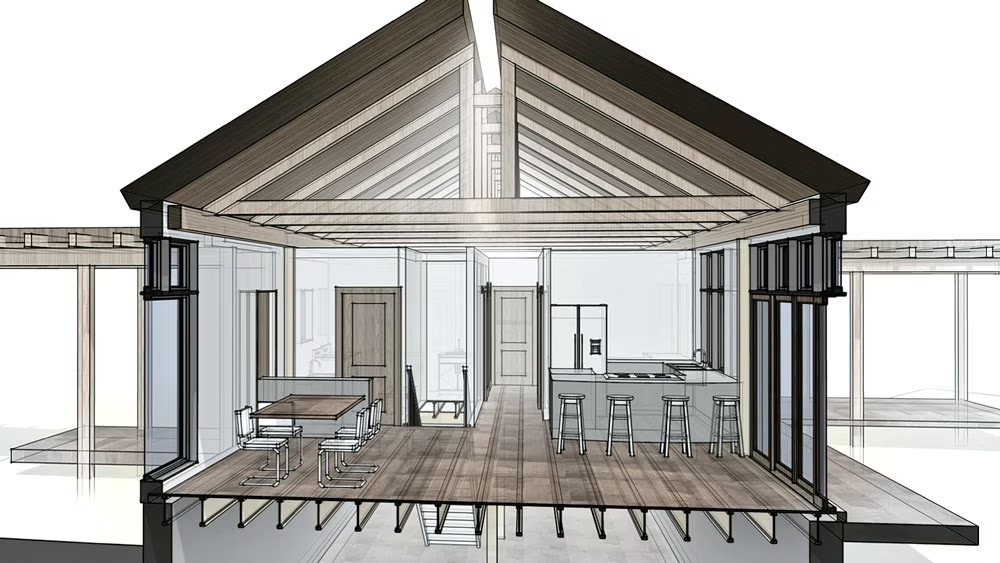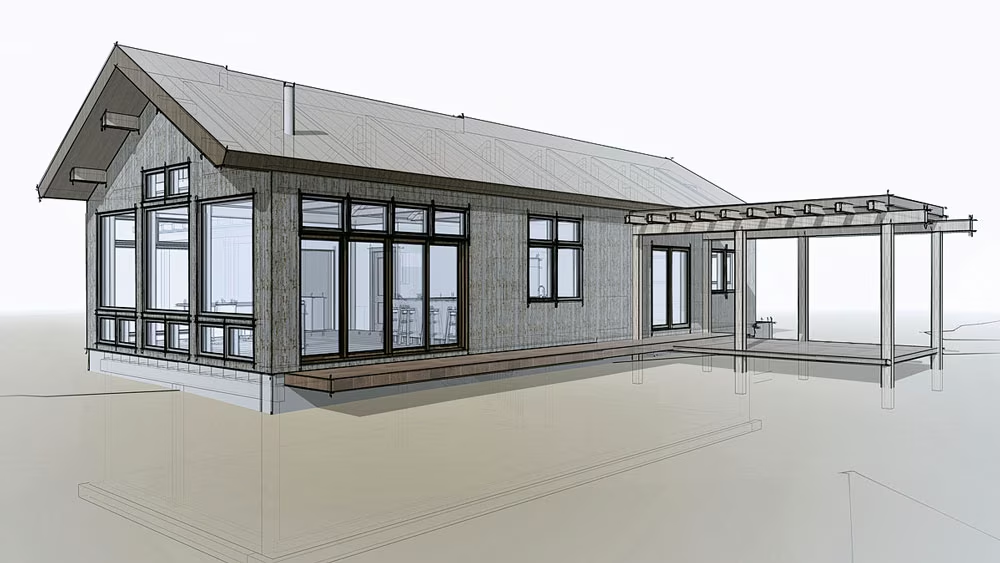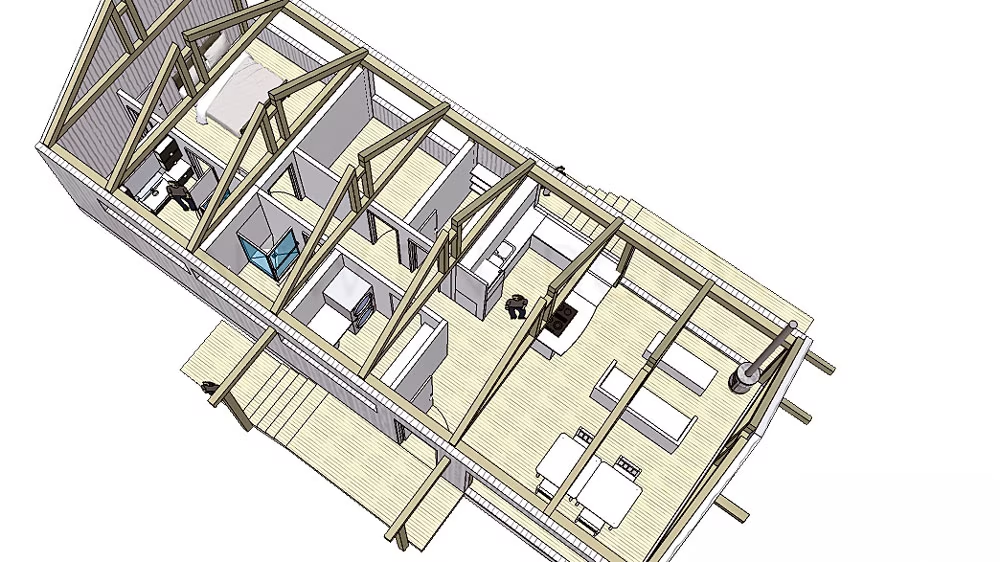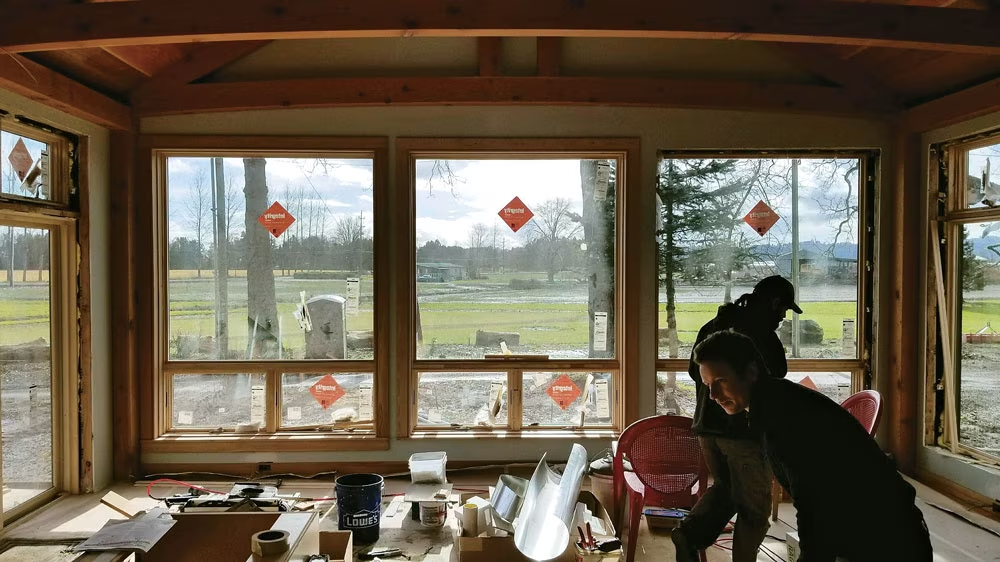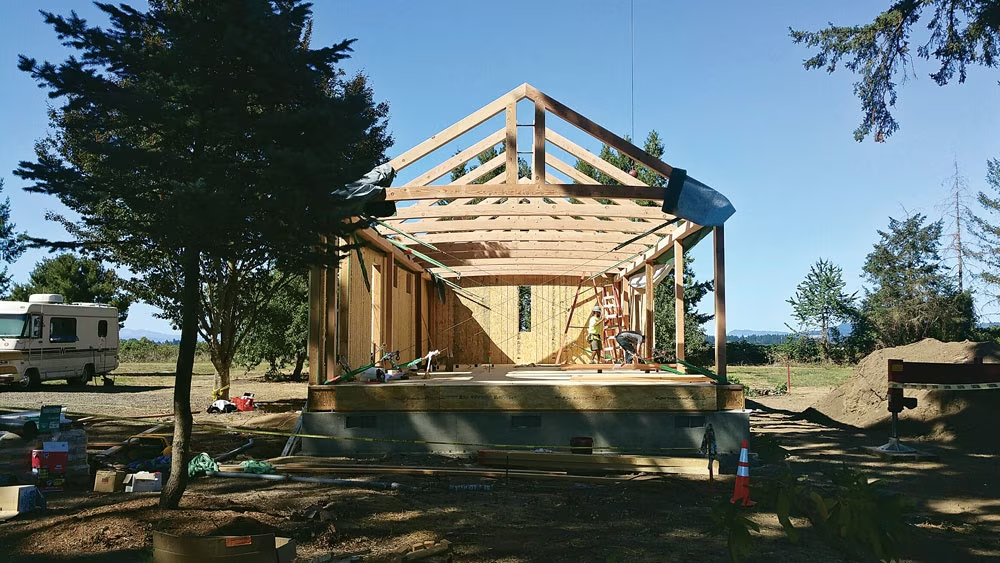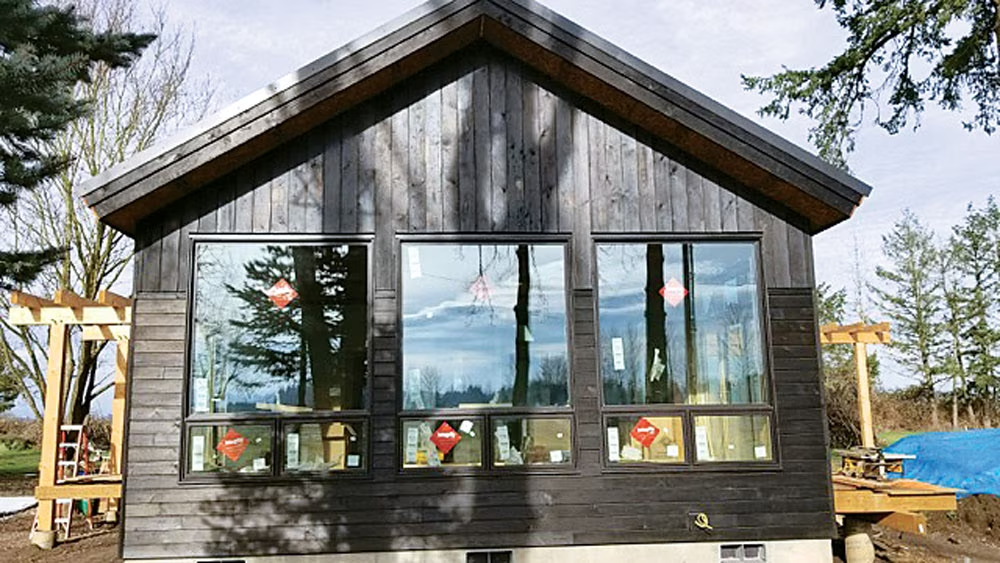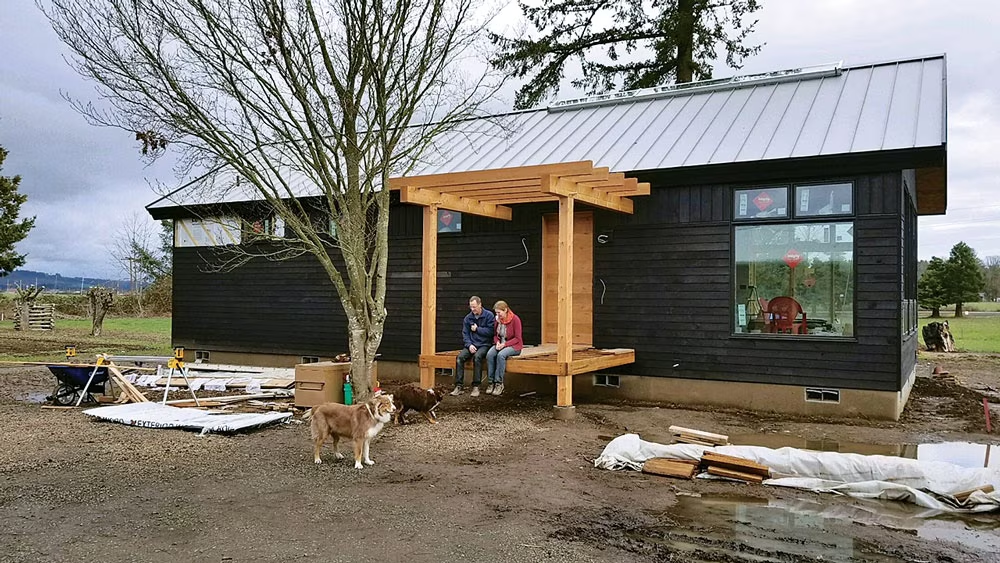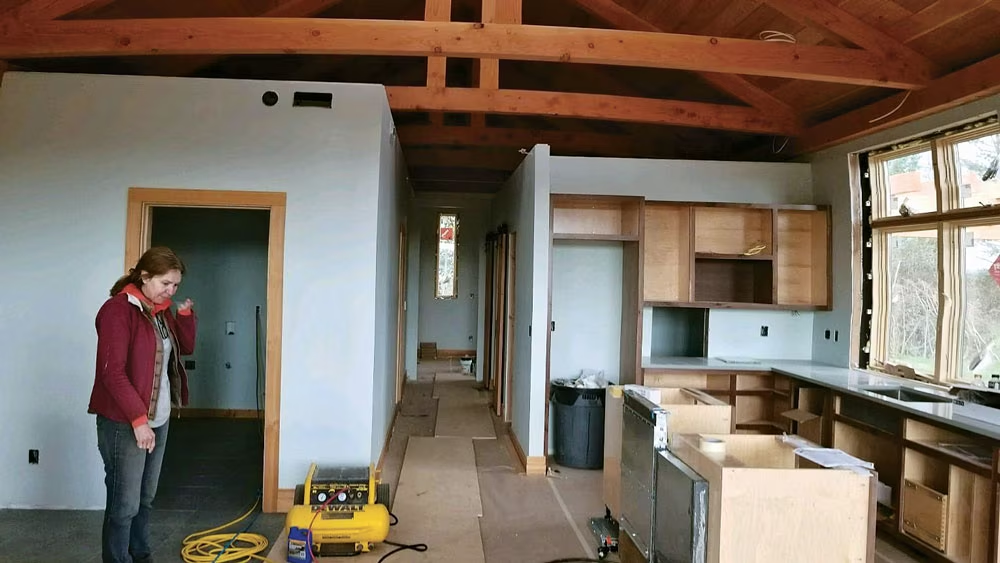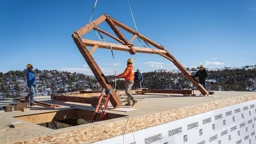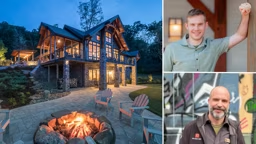Photos and graphics courtesy of New Energy Works
It can happen for a number of reasons. Perhaps all the kids have left home, you can see retirement on the horizon or your existing home requires more maintenance than you can handle (or care to take on). Or maybe you’re just ready to live a simpler life with less expenses and less, well, stuff. No matter the reason, downsizing makes sense for a growing number of homeowners — and can satisfy a variety of different needs.
“A lot of our population today is what we call ‘move-down homeowners,’” says Jonathan Orpin, founder and owner of New Energy Works that has offices in both Farmington, New York, and Portland, Oregon. “These are people who want to simplify, but they still want quality. For this type of client, designing a small yet highly-crafted and high-performing home can be a great approach.”
And that’s exactly what Jonathan did for Rocio and Phil Lundy who wanted to build a “small but perfect” timber home in the Willamette River Valley of Oregon. The Lundy’s came to New Energy Works with a limited budget, but with a desire to create a simple home that would require very little energy input while adhering to the highest building standards. They were also willing to get their hands dirty and put a little sweat equity into the build, a fact that Jonathan says helped a lot when sticking to the budget.
Downsized Design “Like most people in the home-design world, I’ve closely followed the tiny house movement,” says Jonathan. “These are tightly designed and crafted homes of 200 to 400 square feet, often built on a chassis and wheels. Cool idea, but hard to live in for most, I’d reckon.”
For this home, Jonathan started a bit bigger at 1,000 square feet — enough room for a comfortable common area, a couple of away rooms for sleep and work, two full bathrooms, a mudroom and pantry. To make the space feel larger, they also incorporated interior partitions, so the walls and ceiling for all of the interior rooms end at the 8-foot mark even though the peaked ceiling for the home goes much higher. (See diagram above.) “The timbers go all the way back, making the house feel much bigger than it really is,” Jonathan explains.
The contemporary and efficient style of the 1,140-square-foot design is a nod to the simple home styles of the 1960s. “One of the great unsung heroes of American architecture is the classic ranch house,” says Jonathan. “Its efficient floor plan was the inspiration here. It’s pure and simple, with a dynamic interior volume.”
The house itself isn’t tremendously different than a standard double wide, he adds, but its finishing details and high-performance materials are what sets it apart. A long-life metal roof, wood siding, reclaimed floors and triple-paned glass windows will keep the home in good shape for years to come, eliminating the need for much maintenance and upkeep. Handmade cabinets and reclaimed maple countertops in the kitchen are just a few examples of the quality details you can find inside the home, bringing the high level of craftsmanship the homeowners were looking for.
“Their family is nearby, so they didn’t need a lot of extra space,” says Jonathan. “Instead, they spent their money on better windows, more insulation, greater craft in energy detailing, interior trim and finishes.”




